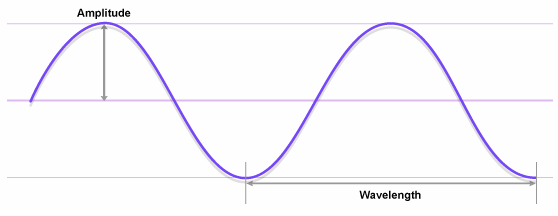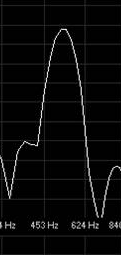Frequencies – Acoustics of Music – Part 3
Scales in Music – A Tonal System
Acoustics of Music – Part 3
Acoustic Principals – Frequencies
Welcome to Part 3 of the Acoustics of Music article series. We hope to convey to you the concept of frequencies, how frequencies are measured and why it is important to know about them. We will also be presenting a visual comparison of two musical notes to strengthen your understanding about frequencies.
Overview
Because of the importance of this information we have made three separate articles for the presentation about frequencies. This is the first. The second part offers a chart showing frequencies in eight octaves of sound. The third part is about the FFT meter and its beneficial uses when working with sound and also when mastering music.
About Sound
Sound is the disturbance of air formulating an undulating or raising and lowering of air pressure visually seen as a wave. In other words, it is a structured vibration. Sound as a whole encompasses a wide range of frequencies or wave forms known as cycles that extends beyond the perceivable range of the human ear as we have learned in a previous post on the subject of the audible range of human hearing.
Seeing Sound
Sine Wave – Technical devices have been developed which allow us to visually see sound waves or frequencies such as the oscilloscope.
The sine wave is comprised of three important components; frequency, amplitude and wave form. A single sine wave looks like the light blue, wavy line seen in the screen of the oscilloscope below. The photo shows three distinct peaks or high points and two low points in the sine wave. The measure of the distance from peak to peak (left to right) is called a wavelength or frequency. The distance above the mid-line and crest of the highest point is called the amplitude or loudness of the sounding pitch.
 This photo is used under the creative commons license. It was taken from the MIT Open Courseware site where the lecture notes were discussing the use of musical notes and the use the oscilloscope.
This photo is used under the creative commons license. It was taken from the MIT Open Courseware site where the lecture notes were discussing the use of musical notes and the use the oscilloscope.
Wavelength vs Frequencies
Frequencies are measured in Hertz (Hz), which is a unit of measure equal to one cycle per second. In this way it is a function of time.
A wavelength is comprised of a peak, a descent, low point, a rise and it ends on the next peak. Wavelength is a measure of distance.
Commonality – Stated a little differently, a frequency value of 1 occurs from one peak to the next peak in one second of time. This is the only instance where frequency and wavelength are equivalent.
Differences – Each single wavelength is one of the fundamental qualities of a specific pitch or single tone, whether a complex tone or a pure tone. Additionally, amplitude is a measure of power or intensity.
The term wavelength is the distance between the peaks or valleys of the sine wave. The photo above shows the difference between wave length and amplitude or loudness of the sound being analyzed.
Frequency, on the other hand, is the unit of measure based upon the number of wavelengths per second as stated above. It is possible to change the wavelength in such a way as to alter its frequency.
Altering Wavelengths
The wavelengths can be altered in one of three ways. We can extend or lengthen it which lowers the frequency or reduces the number of cycles per second. The lower frequency is heard as a lower pitch. We can also shrink or compress the wavelength thereby shortening it and by doing so, it increases the frequency or the number of cycles per second. This higher frequency is heard as a higher pitch.
Also, and as we all know, that the loudness or amplitude of the sound is easily controllable by turning the controls up or down on our electronic devices increasing or decreasing the volume or by playing our instruments louder. Acoustically, we are also increasing or decreasing the height of the sine wave.
Pitch Comparison
When we hear a pitch or a note played on a musical instrument. We become familiar with pitch when we compare more than one pitch to another. Each pitch has its own frequency.
Just below is a sound file where a violin is playing a G note followed by a C note. Notice the differences, specifically which pitch is higher and which is lower. We are listening for pitch (frequency) not amplitude or volume so be attentive to the actual pitches being performed.
The two charts below are snapshots plotting portions of a much longer snapshot of sound and it was produced using the Wavelab software by Steinberg.
Pitch = G 392 Hz Pitch = C 532 Hz
Referencing the two snapshots above, you will notice that each pitch is represented by a range of frequencies rather than just one single frequency. The frequency values run from left to right along the bottom of the photos.
I took a short part of the sine wave from the overall photo to show the two frequencies of the G note and the C note. The fundamental frequency is the highest and usually the loudest portion of the total sine wave. In these photos the very peak of the sine wave represents a single frequency or the fundamental sound of each unique pitch.
For example, the pitch G has a fundamental frequency that is approximately 392 Hz and the pitch C is at approximately 523 Hz. As per our explanation, play the sound file again to hear the difference between the G pitch sounding first followed by the C pitch sounding immediately thereafter.
What we primarily hear is the fundamental sound of each pitch, although it is colored by additional frequencies immediately adjacent to the fundamental tone. This can be seen by the smaller peaks adjacent to the largest or highest in the individual snapshots above. It is likely that we do not hear these frequencies however they do have an influence as to the overall sound however subtle.
Further, the idea we wish to convey is that the higher the frequency the higher the pitch and it is proven out using the snapshots of the G and the C pitches. This same frequency concept holds true regardless of what pitch is heard in comparison to another pitch, unless, of course, they are the same pitch. If different pitches are compared we will be able to visually see the difference between them and be aware of which is the higher or the lower value as measured in frequency.
Why This Is Important to Know?
Sometimes science has a way of helping us to understand the world we live in. Regarding music, this is very true and applicable. If we understand the underlying principals of sound and apply them to the concepts being taught in music theory we begin to see a broader picture than we would otherwise. It is not our intention to delve into the science part of it to an extreme, only enough to help with the understanding of how sound works and how to put sounds together to make that wonderful thing we call music.
Understanding acoustics is vital in so far as frequency or pitch is concerned since this is what makes up melodies and harmonies, two of the most important and fundamental aspects of music. Since there are certain relationships between frequencies, there are by default certain relationships to the pitches a composer selects when creating music. If we understand that principal we can then employ this knowledge to write musically and the results are pleasing and enjoyable to us. In other words, we have become more effective at writing music with this stronger and more meaningful foundation.
Further, if we want to edit recorded sound, having a foundation in acoustics will aid greatly in performing this task. Without this knowledge, many of the tools used for sound editing would be unknown to you and by default, inaccessible to you, thus limiting your employability and/or your effectiveness when using them. This disability would not bode well if your interest in music is to pursue a career as a sound engineer for example. Likewise, your skills at mastering music would be severely limited. We all know that producing a high quality product in the music industry is a requirement and so it is vital to open the doorway to this information at the early stages of this article series.
In part 4 of the Acoustics of Music series we will take a look at a very interesting chart showing the frequencies of the various notes spanning eight octaves of sound.
Please proceed to Part 4 of Scales in Music – A Tonal System. It is titled Table of Frequencies.
Mini Series Links
To return to the Music Theory – Level 1 directory for the article listings within the series, please proceed to Music Theory Section – Level 1 – Series Introduction – Part 10.
To continue onto Music Theory – Level 2 directory for the article listings within the series, please proceed to Music Theory Section – Level 2 – Series Introduction – Part 20
To proceed to Acoustics of Music directory for the listings within the mini-series, please proceed to Acoustics of Music – Part 1 – Series Introduction.
Additional Reference
For those who wish to do a little more research into the acoustics of music and specifically learn more about frequencies, please download this free paper from the University of Wisconsin.
Don, Gary W., year Unknown, Music: A Time-Frequency Approach, Department of Music and Theater Arts, University of Wisconsin, Eau Claire Wisconsin







